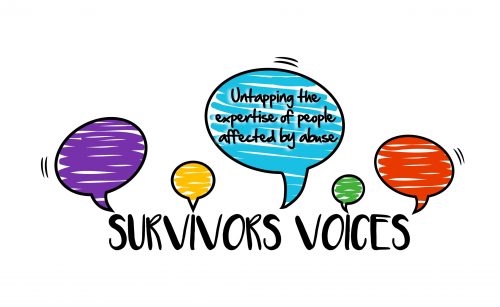Dr Síofra Peeren presented on Trauma Informed Approaches to Research drawing on her PhD.
Síofra can be contacted via Susanna if you would like to seek further guidance regarding her PhD.
The foundation stone for trauma informed research is to understand trauma and to
operationalise survivor involvement in the study in a way that does not replicate the original
trauma, or (re)traumatise.
“Trauma matters. It shapes us. It happens all around us. It destroys some of us, and it
is overcome by many of us. To ignore it is to ignore who we are in all our complexity”
- Filson (2016, p. 20) Trauma-informed research…
- Brings an awareness of the impact of trauma in both how the research is conducted and how the findings are presented.
- Minimises the risk of re-traumatisation at all stages (design, data collection, dissemination) and maximises potential for healing (involvement, flexible approaches to data collection, ensuring findings represent survivors’ full experiences).
- Represents the full range of survivors’ experiences (not just the negative, which
risks painting survivors as ‘damaged’ or one-dimensional). - Approaches the research with flexibility and creativity, thinking about how to make
it fun and liberating and interesting for survivors. People should come before
methodological purity. - Look after researchers’ well-being as much as participants’ well-being.
- Makes space for acknowledging multiple and overlapping sources of systemic harm
and oppression.
Furthermore…. - Genuine partnership and collaboration are a necessary and essential component of
trauma-informed approaches. - Trauma-informed approaches in research are not just about how we collect data e.g.
interviews. It is a value system that guides all our decisions – including how we
interpret data and communicate findings. - Trauma-informed research and involvement activities can be a form of ‘bearing
witness’ and a source of empowerment, if they genuinely amplify and centre the
voices of survivors.
Trauma is complex, and personal yet there are founding principles which can guide us in
designing research that is safe, supporting and potentially healing for survivor co-producers
and/or participants.
Adhering to the Survivors Voices Charter for Engaging Survivors is an excellent starting point
See the full charter here https://survivorsvoices.org/charter :
Key principles are - Safe
- Empowering
- Amplifying the voices of survivors
- Promoting self-care
- Accountable and transparent
- Liberating
- Creative and joyful
Additionally:
10 key principles of trauma-informed approaches which Sweeney et al. (2018) adapted from
Elliot 2005; Bloom 2006; SAMHSA, 2014). Sweeney et al. (2018). A paradigm shift:
relationships in trauma-informed mental health services.
Key takeaways:
- Abuse of power and silencing are characteristic of trauma, violence and abuse
(Sweeney et al., 2019). - For research to feel safe for survivors it needs to promote empowerment and
counteract silencing (Downes et al., 2014). - Collaboration and partnership is key – survivors “should be instrumental in bringing
about change” (Oram et al., 2022). - Trauma-informed approaches can conflict with accepted ways of ‘doing’ research
(Downes et al., 2014), e.g., Institutional Review Boards (ethics committees) often
operate from an assumption that survivors of violence and abuse are inherently
‘vulnerable’.
- Síofra went on to present:Conducting a trauma-informed narrative study
Methods – control and ownership and self-care
Participants could choose own synonym
Participants could review and amend their transcript
I co-facilitated survivor engagement workshops with Survivors Voices
Workshop participants received a self-care / well-being pack and had access to peer
support through Survivors Voices
I checked in with participants after interviews and stayed in touch
Methodology – allow for ownership and flexibility
From Brison (2002):
As I use the term, a ‘narrative’ does not need to have a beginning, middle, and end, unless
that is taken to mean, simply, that it starts and ends, with something in between… [a
narrative] is a social interaction—actual or imagined or anticipated or remembered—in
which what gets told is shaped by the (perceived) interests of the listeners, by what the
listeners want to know and also by what they cannot or will not hear (p. 102)
Brison, S. 2002. Aftermath: Violence and the remaking of a self. Princeton University Press. See also
Kelland (2012): A narrative model of recovery. You can access this paper here.
Meaningful survivor involvement
Read more here:
https://www.quahrc.co.uk/impact-in-qualitative-research-siofra-peeren-survivors-voices-
the-flying-child-perspectives-on
Key takeaways: - Maximise participants’ agency and control
- Ensure your theoretical/methodological framework allows you to produce findings
that:
(1) Resonate with survivors’ own understandings of their experiences
(2) Allow for complexity
(3) Name systemic sources of harm - Embed meaningful survivor involvement. If possible, work with a community partner
agency to ensure accountability and transparency. - Look after your own as well as participants’ well-being, keeping in mind the
importance of joy and liberation as well as avoiding harm.

